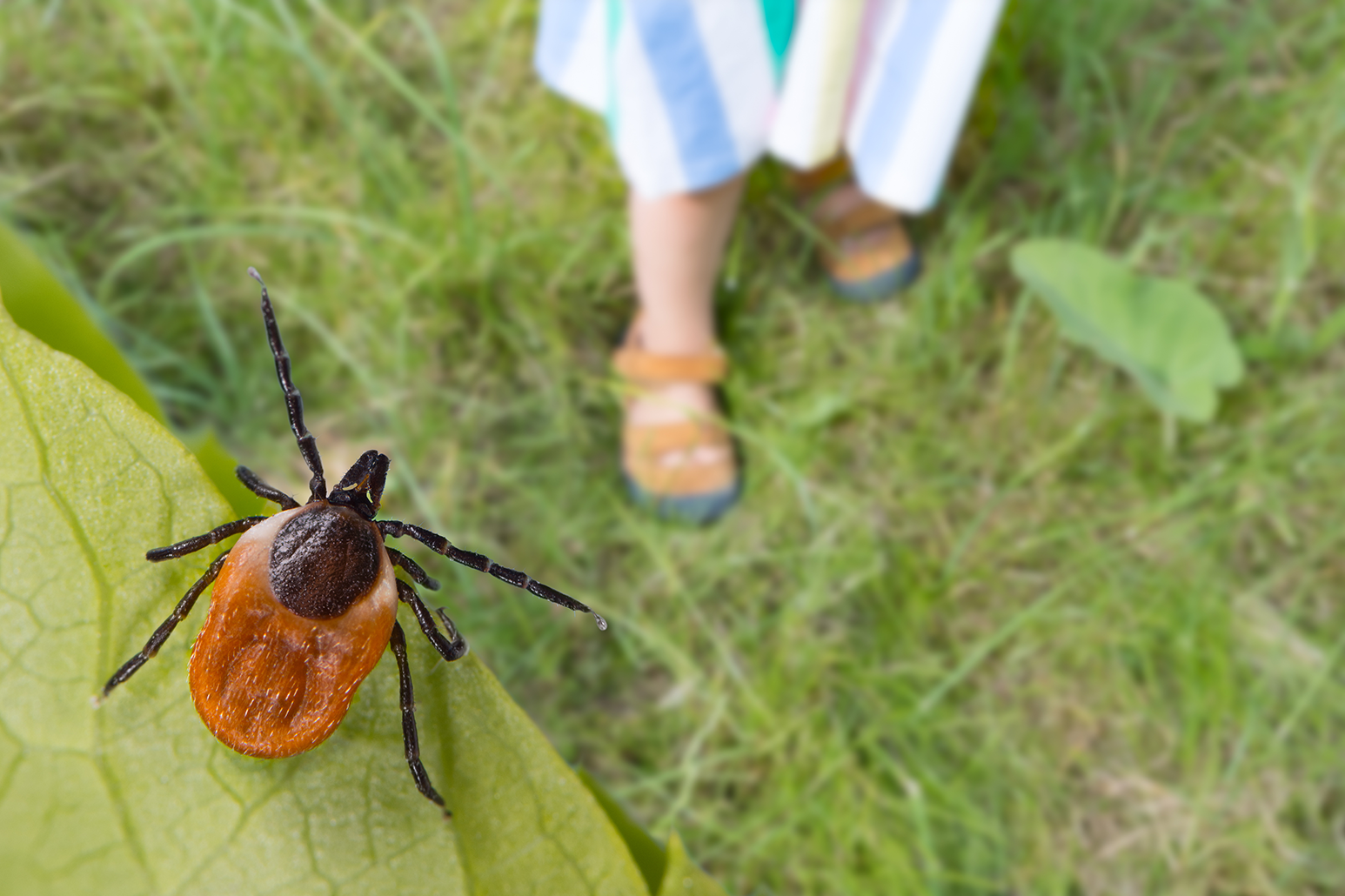Learn how to identify deer ticks and the telltale bull’s-eye rash of Lyme disease, discover safe...
Read More

If you’re an outdoor enthusiast, you’re probably familiar with the post-adventure-check-for-ticks routine. Although it’s a customary practice for walkers, bikers, hikers and nature lovers, it’s important to remember why: The longer a tick is attached to your body, the greater your risk of being infected with Lyme disease.
“Lyme disease is caused by the bacterium Borrelia burgdorferi, which is transmitted to humans through tick bites,” said Vakula Atthota, M.D., Director of Infection Prevention at Inspira Health.
Not all tick bites lead to Lyme disease; however, deer ticks—which are rampant in the Northeast—are known carriers of Lyme disease bacteria. Early diagnosis and treatment of Lyme disease can prevent late and sometimes debilitating complications.
If you are the victim of a recent tick bite, do not panic: Usually, a tick needs to be attached for 36 hours before it can transmit Lyme disease. “If you find a loose tick on your skin or clothing, scan your body once more to make sure no more ticks are hiding,” said Dr. Atthota.
Early signs and symptoms of Lyme disease appear 3-14 days after the initial tick bite and can include a rash and/or flu-like symptoms. “The characteristic rash at the site of the bite is usually red or purple in color and gradually enlarges in size with a central clearing, much like the shape of a target,” said Dr. Atthota.
Some symptoms appear many weeks after the tick bite and can include joint pain involving one or more joints. Rarely, headaches, meningitis and an irregular heartbeat can occur. Early diagnosis and prompt treatment can prevent these late complications.
Unfortunately, there is no perfect lab test for diagnosing Lyme disease. “Diagnosis is based on symptoms, tick exposure history and laboratory tests,” said Dr. Atthota. “Most lab tests are designed to detect antibodies made by us in response to the Lyme disease bacteria.”
If you’re concerned about a tick bite, the sooner you speak with your doctor, the sooner you may be able to get tested and start treatment. People treated with antibiotics for early disease typically experience a quick recovery.
There is no way to prevent Lyme disease completely; however, there are several ways you can reduce your risk of getting Lyme disease.
“When you go outside, wear long pants and long-sleeved shirts, keep your hair contained or wear a hat, and use EPA-registered insect repellent for ticks,” said Dr. Atthota.
Upon your return, be sure to check your clothing and body for ticks and shower immediately. Ticks like to hide in your hair, around the ears, under the arms, around the waist, behind the knees and between and around the legs. “If you do find a tick and it is lodged in your skin, use tweezers to pull the tick out by the head. Then clean the area with soap and water,” said Dr. Atthota.
Other preventive measures include:

Learn how to identify deer ticks and the telltale bull’s-eye rash of Lyme disease, discover safe...
Read More
Asian longhorned ticks are an invasive species that pose health risks to humans and animals...
Read More
Knowing basic first aid can significantly improve your ability to respond to emergencies, from...
Read More